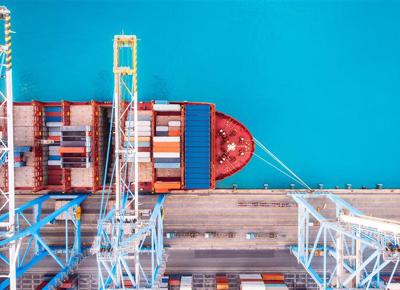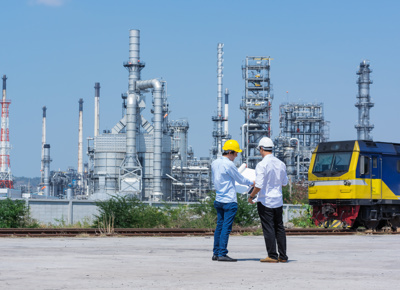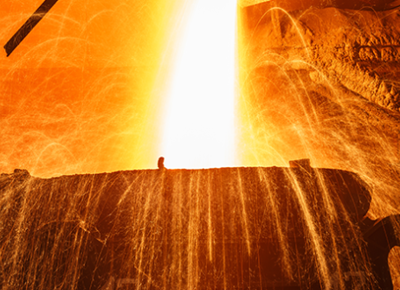What is Control of Work?

Control of Work (CoW) is the Safe Management of Maintenance Work and Processes by putting in place a system which incorporates Hazard and Risk Assessment (RA), Isolation Management (IM) and Permit to Work (PtW). All three should be equally represented and linked together in the control of work process to ensure health and safety compliance. The easiest, safest, and most efficient way of achieving this is through a Digital Control of Work solution.
There are many sources of potential risk when carrying out maintenance work:
- not doing it on time – you don’t get to it before it fails, or you miss a statutory inspection
- doing it too slowly – you lose production, or the site is in a vulnerable condition for too long a period
- doing it incorrectly – this is by far the biggest source of accident and incident and something we will focus on in our regular blog. This may be down to failure to communicate, a poor risk assessment, incompetence, lack of understanding, poorly defined work procedures, incomplete energy isolation and many more – all of which will be considered.
All the risks identified above could result in accident or incident.
It might be that it is the working environment brings this about e.g., breaking containment in a flammable or toxic area or it might be that the work itself is hazardous, perhaps occurring at height or underground.
It might also be that the tools being used present the hazard e.g., naked flames, rotating tools etc. Of course, it might be a combination of all three.
Whatever the source, the focus of any Control of Work management system must be to keep people safe and equipment free from damage whilst the maintenance work is being carried out to ensure safety compliance.

What does Control of Work (CoW) include?
The scope of the Control of Work (CoW) in this case, includes:
- the systems
- work procedures
- risk assessments,
- documentation
- records
- standards
that an organisation establishes to carry out maintenance work safely.
In most cases, these will be a mixture of digitally held data and perhaps some paper-based ones. Most will rely heavily on Permit to Work which on most sites will be your front-line method of safe work and will represent the combination of all your other risk assessments and other systems.
Why is it needed?
Moral obligations for employers to adhere to safety standards and look after the well-being of their workforce and the environment in general are supported by health and safety legislation brought in because of some very serious accidents.
There have been several high-profile ones within Manufacturing and high-risk Processing Industries. The most significant of these are Piper Alpha, Bhopal, Chernobyl, and Seveso. The Piper Alpha disaster in the North Sea caused 167 deaths.
There were many contributing factors to the disaster, but unsafe practices in controlling the maintenance work was most significant.
Bhopal figures are far worse, with estimates of around 15,000 deaths initially and many more later. The figures for Chernobyl are unclear, however, the effects have been felt over several years with reports estimating 4000 premature deaths.
The Seveso disaster did not kill anyone but because of its potential, has the highest profile in Europe. The disaster has led to the Seveso Directive in Europe and its principles appearing in country legislation worldwide.
Not all these accidents are concerned with the Control of Work (CoW) but all have to some degree altered the climate in which all work is carried out.
These concerns led to changes in individual national legislation initially but are now embodied in US, European and other legislation which places the responsibility upon the employers to ensure compliance and a safe environment for their employees.
Additionally, there is increasing focus on making Company directors and owners personally liable for failure to ensure safety at work, and as well as the moral and legal obligations for employers there are some simple pragmatic choices to consider also:
- an organisation will be at a disadvantage in selling its products if its reputation is poor
- recruiting and retaining the employees will be difficult if they fear for their safety and lives
- the costs involved in damage to equipment, resolving situations and legal action, and the time consumed in doing so
Can we improve on it?
The response from industry to comply has been to tighten up on all aspects of their processes to ensure employees are safe. Prime amongst these is making sure that they have an effective and efficient Control of Work system in place that delivers on safety.
The key to a successful digital system is to have one that:
- ticks all the boxes
- that delivers safety and legislative compliance
- that is easy to use and saves you money
But more importantly, one that engages the workforce and keeps them focused on the important issues.
That system is RAP4 your trusted Gateway to Control of Work, making sure it all happens.
Related Articles
 Best Practice Control of Work
Best Practice Control of Work
We would like to share this experience with you in a series of articles with the common goal of keeping our workplaces safe.Welcome to this series of ...
 People Involvement in Control of Work
People Involvement in Control of Work
The Control of Work involves many different roles in carrying out all the elements that are required to keep jobs safe. For example, faulty and vulner...
 Why does Control of Work matter? 4 key reasons to go digital
Why does Control of Work matter? 4 key reasons to go digital
There are many reasons why safe Control of Work (CoW) really matters, particularly in industries that may not be as obviously dangerous as high hazard...